Testing and inspection
Why testing?
Testing is required to verify if a product meets a specific standard. It is carried out by independent laboratories in various countries.
MCT Brattberg use the following labs:
- South West Research (San Antonio), USA
- BRE London, UK
- SP Technical Research Institute of Sweden
- Efectis, France
- HSL, UK
Most of the testing we do is for fire resistance, however there is also a requirement for:
- Pressure tightness (DNV and Coastguard)
- Shock (Dayton Brown)
- Vibration (Dayton Brown)
- Explosion (TNO)
- UV Resistance (Artis)
- Heat Cycles (Rapra)
- Chemical Resistance (Rapra)
- Rodents (Rapra)
- IP/Nema Ratings
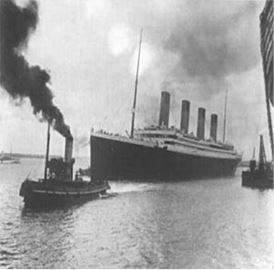
Who needs testing?
In order that a ship may sail in international waters or a platform may drill for oil, it must meet the requirements of “The International Maritime Organization (IMO).
The IMO Regulations for our product is debated by the Safety of Life at Sea (SOLAS) committee.
SOLAS dates back to 1913, when the first convention was held to discuss the sinking of the RMS Titanic. (Ice Watch, Radio and Lifesaving Equipment)
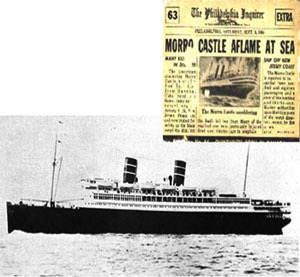
Safety of life at sea
- In 1934 the ship “Morro Castle,” burned off the coast of New Jersey killing 124 people.
- A special Senate sub-committee ratified the earlier SOLAS convention.
- This convention dealt with the containment of fire to “the enclosure in which it originated.” his containment has resulted in testing for “structural fire protection”.
Why is testing necessary?
- IMO is a society of authorized agencies (administered by the United Nations), sometimes called Classification Authorities (CA’s) from different countries throughout the world.
- It originated with the United Nations is 1948.
- They agree on certain rules which each vessel should be built and maintained to.
- IMO Rules (SOLAS 74) are re-published every 4 years.
- NB The vessel requires to be certified by the signing agency in the country which the vessel is based, not the country in which it is built.
- A platform built in Korea for the Gulf of Mexico would require USCG approval.
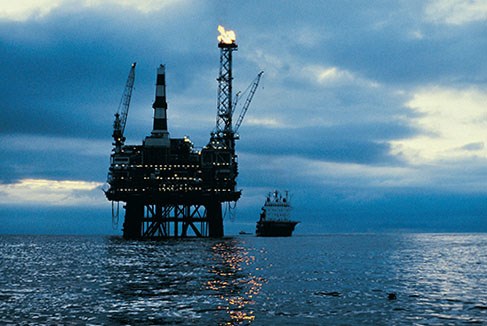
The IMO regulations are set down and agreed upon by the Certification Agencies.
WHO SETS THE RULES?
- The United States Coast Guard (USA)
- Lloyds Register of Shipping (UK)
- DNV-GL (Norway)
- ABS (USA)
The basics of the tests are the same.
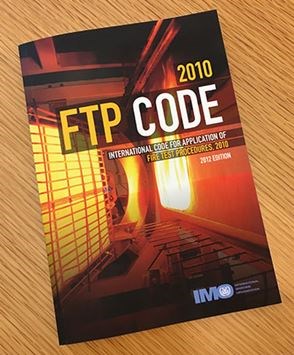
FIRE TEST PROCEDURE CODE (FTP)
Fire test procedure code is a book of procedures. In it are details how to fire test such items as;
- Cable and Pipe Penetration Seals
- Fire Dampeners
- Furniture
- Fire Doors
The code book refers the reader back to the IMO standard. What is a fire test?
The standard for Cable Transits is 2010 FTP Code MSC 307 (88).

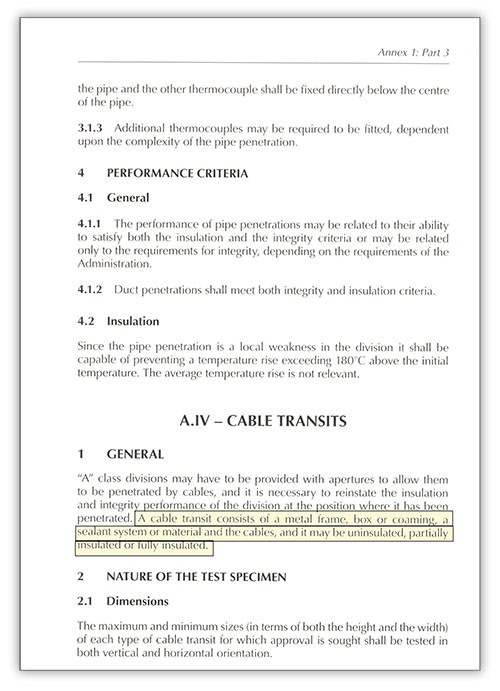
- The code book refers the reader back to the IMO standard. What is a fire test?
- The standard for Cable Transits is 2010 FTP Code MSC 307 (88).
This standard replaces IMO 754.
- A 3m x 3m test bulkhead or deck is supplied.
- Transits are installed in this test specimen.

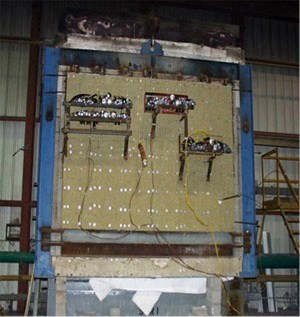
- Test specimen is lifted onto the test furnace.
- The furnace contains 9 gas burners to provide fuel for the fire.
- The exposed side of the bulkhead after removal. (fire side).
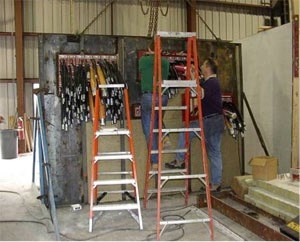

Please visit our knowledge areas covering:
Safety
Cable and pipe transits must have features that make them safe in a variety of hazardous applications to protect people, environment – including intellectual property like computer data – and to help ensure the continued operations of a business or other organization.
See moreFrames
The design, materials, construction and finish of frames play decisive roles in determining the safety of frames in withstanding constant stress in maritime and land-based environments.
See moreCable management
Before working with insert blocks, cable management has to be carried out. Basically, this means that all cables passing through frames must have enough movement to allow them to be positioned correctly to facilitate fitting the insert blocks.
See moreInsert blocks
For first-rate insert blocks, a lot of thought and good science goes into what may at first seem a simple transit component. But the performance of blocks is a key element in assuring the safety of cable transits.
See moreProfessional installation
No matter how many safety features are built into the components of cable and pipe transits, they can only be realized through correct installation. This means that transits must be complemented with training to maximize the safety awareness in all stakeholders.
See more